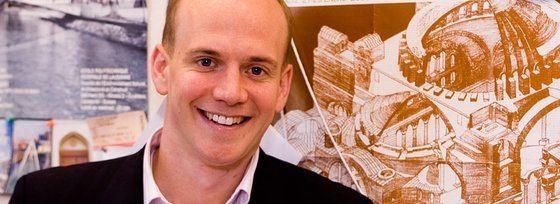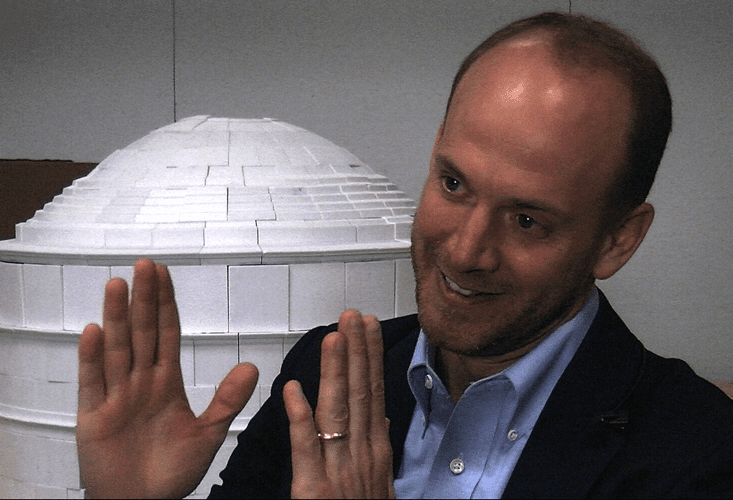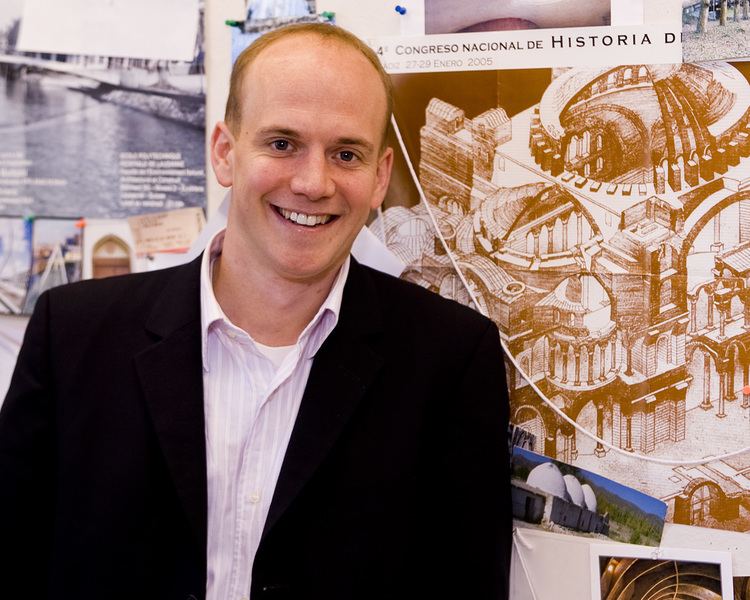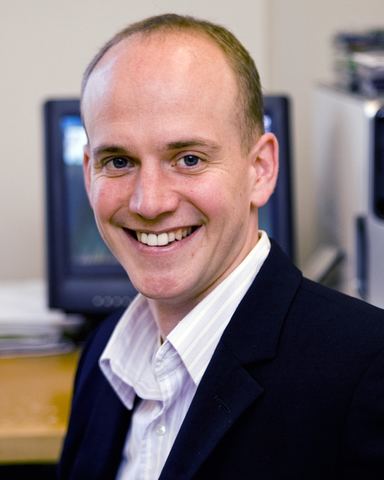Nationality United States Awards MacArthur Fellowship Spouse Anne Carney | Role Structural engineer Name John Ochsendorf | |
 | ||
Books Guastavino Vaulting: The Art of Structural Tile | ||
form and forces john ochsendorf
John Ochsendorf (born 1974) is an educator, structural engineer, and historian of construction; he is a professor in the Department of Architecture and the Department of Civil and Environmental Engineering at the Massachusetts Institute of Technology. He is widely known for becoming a MacArthur Fellow in 2008 He has served as the Director of the American Academy in Rome since July 2017.
Contents
- form and forces john ochsendorf
- John ochsendorf 2012 2013 lowell lecture series common ground boston public libary
- Early years and education
- Career
- Collier Memorial
- Personal life
- Awards
- Published works
- References

John ochsendorf 2012 2013 lowell lecture series common ground boston public libary
Early years and education

Ochsendorf grew up in Elkins, West Virginia; he was educated at Elkins High School, Cornell University, Princeton University, and the University of Cambridge. His university degrees are in structural engineering and he minored in archaeology at Cornell.

He also studied in Spain under the Fulbright Program.
Career

Ochsendorf joined the MIT faculty in 2002, and holds a joint appointment in the MIT Department of Civil and Environmental Engineering (CEE) and the Department of Architecture. He teaches both undergraduate and graduate courses, and serves on a number of faculty committees.

Ochsendorf is known for using architecture and engineering to study and restore ancient structures and sometimes draws upon ancient building methods for the benefit of modern construction. He has studied Incan simple suspension bridges and the earthquake-worthiness of Gothic cathedrals.
Ochsendorf also curated an exhibition Palaces for the People, featuring the history and legacy of Guastavino tile construction, which premiered in September 2012 at the Boston Public Library, Rafael Guastavino's first major architectural work in America. The exhibition then traveled to the National Building Museum in Washington DC, and an expanded version appeared at the Museum of the City of New York. Ochsendorf, a winner of the Macarthur Foundation "genius grant", also wrote the book-length color-illustrated monograph Guastavino vaulting : the art of structural tile, and an online exhibition coordinated with the traveling exhibits.
In addition, Ochsendorf directs the Guastavino Project at MIT, which researches and maintains the Guastavino.net online archive of related materials.
Collier Memorial
On April 29, 2015, MIT held special ceremonies dedicating a memorial to MIT Police officer Sean Collier, who had been killed by Tamerlan and Dzhokhar Tsarnaev two years earlier. Ochsendorf and his students were deeply involved with the structural engineering of the design, which was led by J. Meejin Yoon, the head of the MIT Department of Architecture. The memorial consists of 32 massive granite blocks precision-shaped under computer numerical control, and fitted together into a shallow open domed arch with 5 radial support wings splayed out like fingers of an open hand.
The design was carefully evaluated in computer simulation for resistance to a major earthquake before being approved. Compressive forces on each block were calculated to be in the range of 20,000 to 50,000 pounds (9,100 to 22,700 kg). Each joint between the stone blocks was shaped to be perpendicular to the forces transmitted through the joint, visually expressing the invisible forces that hold the structure up. The underground foundation, an essential part of the structure, is made of reinforced concrete to resist the spreading forces produced by the shallow arch it supports. The weight of the structure is supported by mini-piles driven to a depth of 30–40 feet (9.1–12.2 m).
The polished, tapered stone blocks, carved to a precision of 0.5 millimetres (0.020 in), were installed with the assistance of Ochsendorf and his team. The scaffolding was carefully removed over the span of 8 hours, while the descent of the central 12,000-pound (5,400 kg) keystone was carefully monitored. Predicted to settle 5 to 15 millimetres (0.20 to 0.59 in), the stone was actually measured as descending 6 millimetres (0.24 in).
At the dedication ceremony, MIT President Rafael Reif observed that the memorial represented the community coming together after tragedy: “We are held together by invisible forces too".
Personal life
From 2010-2017, Ochsendorf and his wife Anne Carney served as housemasters of the MIT graduate student dormitory called "The Warehouse". He is an enthusiastic soccer player, and enjoys hiking, cycling, and camping. He has lived in Australia, England, Spain, and Italy, and enjoys travel.
